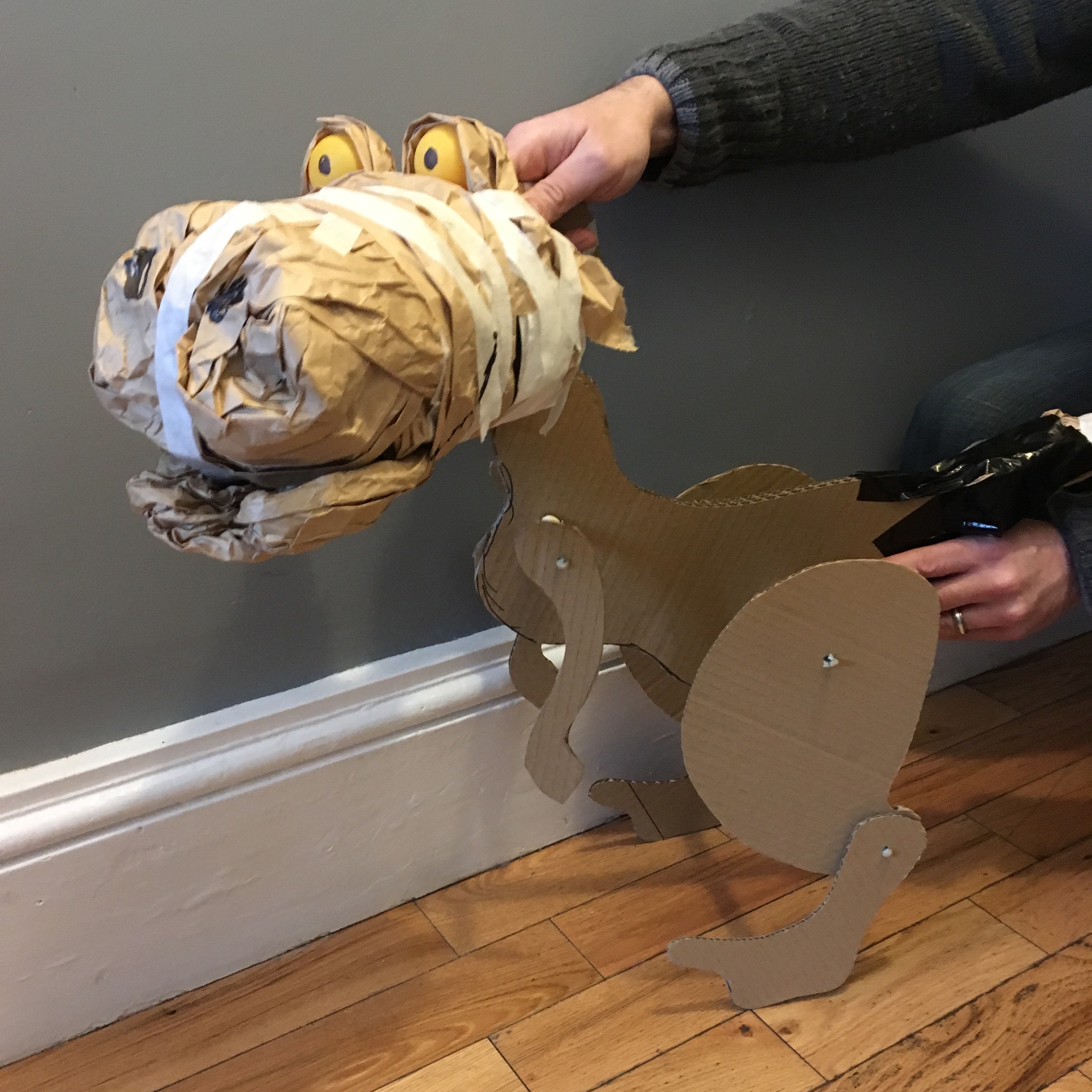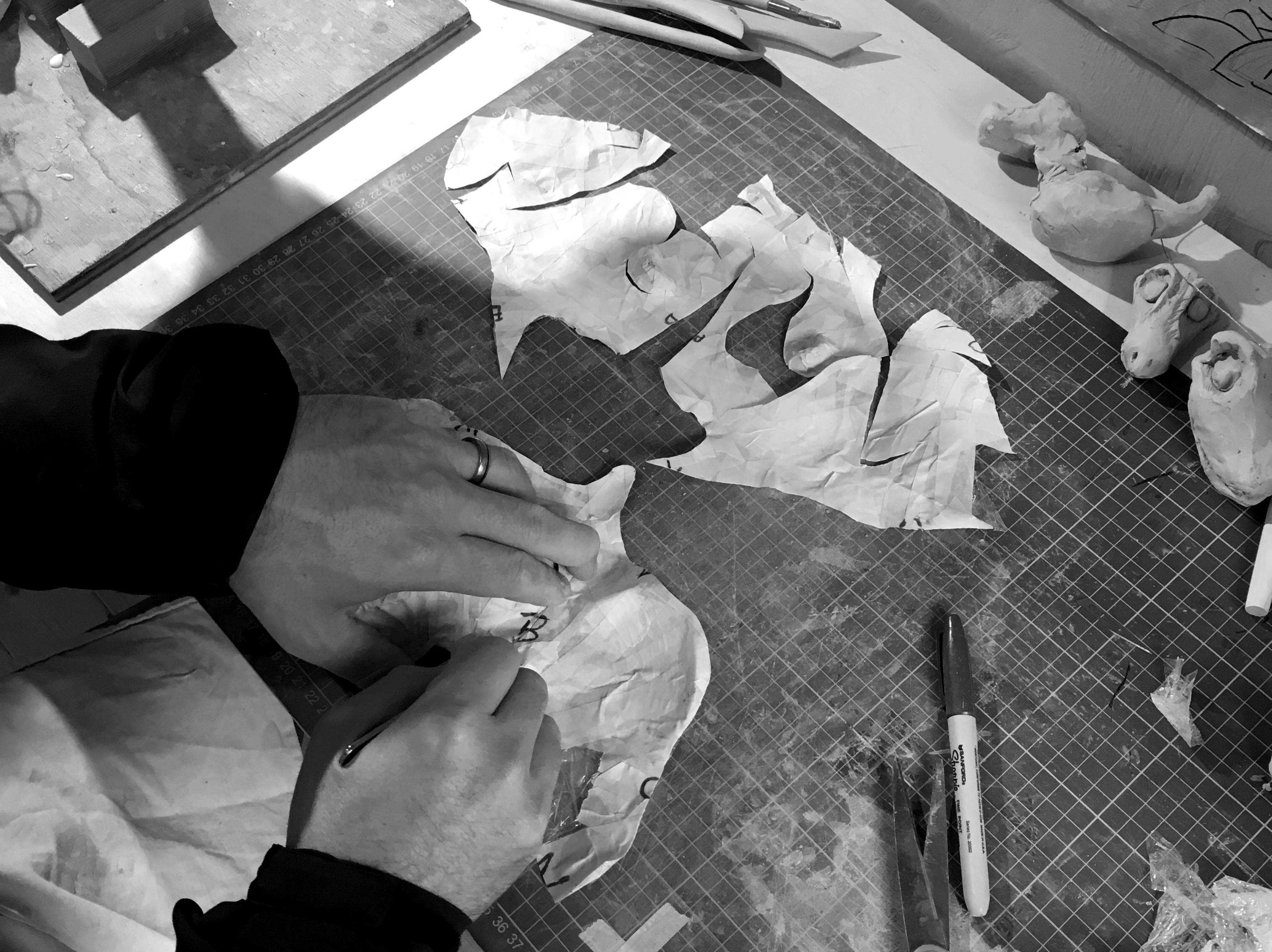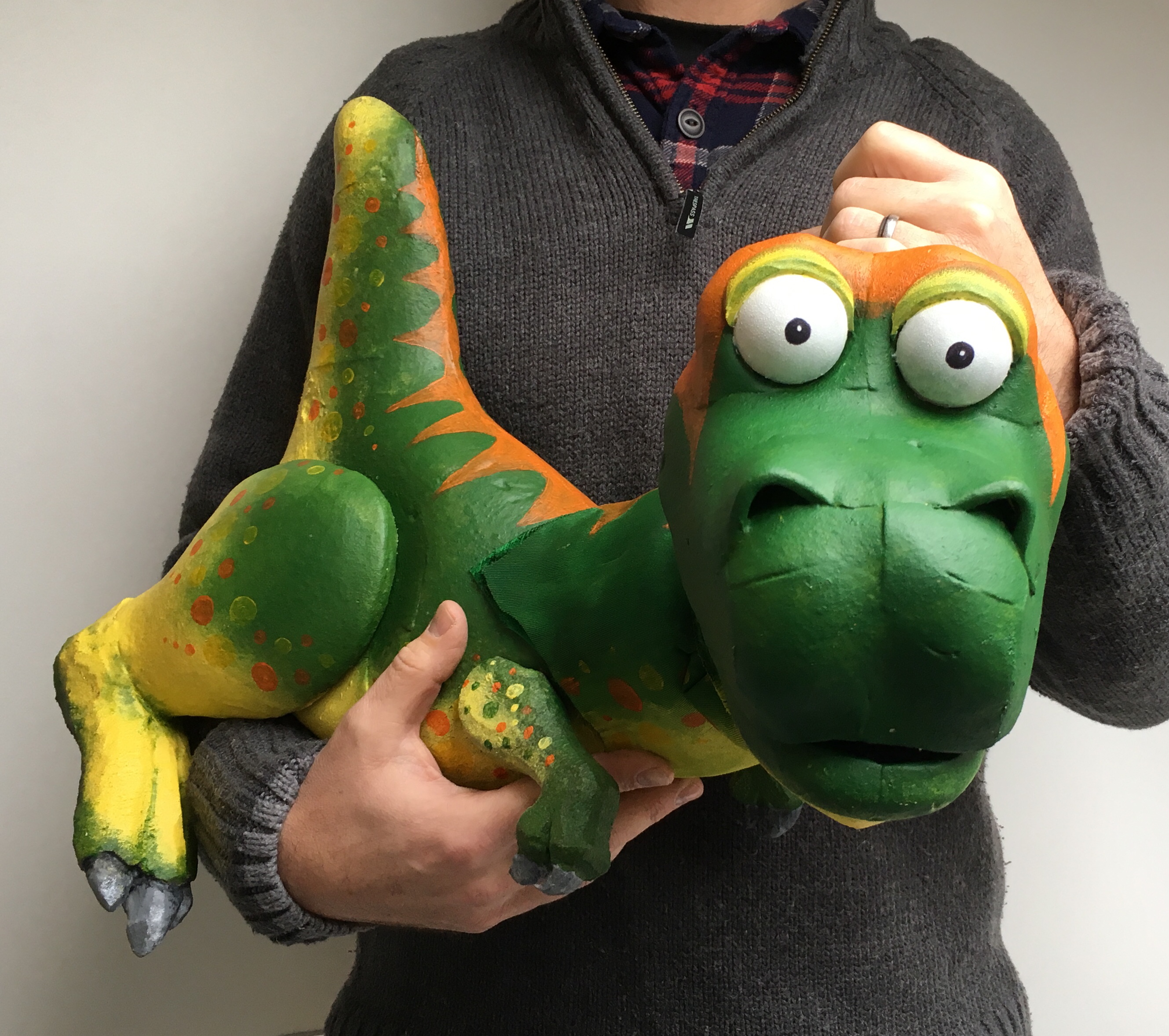First Steps In Puppet Making
Where do we start in puppet making? In our process, it starts with the story. Everything starts with a story! Once we have that we start to imagine what, where and when the puppet(s) may add to the visual storytelling. Can we add a puppet to help tell a section of the story? Take us on an otherwise impossible journey? Fly through the air, fight a deep sea monster or fall from an enchanted tower.
Types of Puppets We Use
Once those questions have been answered, then we have to decide what style of puppet we need. We tend to enjoy the use of shadow puppetry, tabletop puppetry and object manipulation.
Shadow puppets are just as it suggests, puppets that block light casting a shadow onto a screen or wall. We sometimes add colour and use 3D landscapes to give depth to a shadow sequence. Tabletop puppets are handheld. They need a platform to be seen by the audience, hence the name. Object manipulation is just that, using the same techniques as we use with a table top puppet but using found objects. A suitcase becomes a mouth of a crocodile or a screwed up sheet of paper an old grannies face.
Designing When Puppet Making
Sketches are drawn, ideas are gathered and once we have the feel for the puppet we make further drawings before we start to construct it.

From these sketches, we develop the puppet into mock-up made of screwed up brown paper and cardboard. If you ever want to try this always add eyes (we have a drawer full of ping pong balls) as it makes everything come alive. This quick 3D version gives us a greater understanding of size and movability.

Next Stages of Puppet Making
In this production, we have come to the conclusion that we need more than one puppet for the same character. This is because the puppet needs to do different things in different scenes.
We use clay to sculpt a version of our final idea from all the sketches we have made.
From this, we create a pattern. The clay version is covered in cling film and then masking tape. When its all covered, we cut it off and make a flat pattern. The finished pieces work in the same way as a dress makers pattern. Using an Over Head Projector we can scale up the pattern to any size.
The pattern is then cut from closed cell foam, it is just like camping mats, only more robust. All the pieces are glued together and the form can come together quickly.

Any fiddly bits are sculpted from larger blocks of foam and then we piece it all together. We work out the jointing system for the legs and head and figure out the mechanism needed to make any moving parts. It always takes longer than we think and is a challenge to make it move right but when it’s finished it is lightweight, strong and will hopefully stand up to the physical use within the run of the production.


Last Steps in Puppet Making
Once we are happy with the overall look and construction the last job is to paint it. Various sealants, primers and paints are used to create the finished puppet. Often perceptions of how it will be painted changes as the puppet forms and its character emerges. But working the way we do means we have the flexibility to make changes all the time. Many mistakes are made along the way, but its all about working together and solving the challenges that arise when puppet making.

Designing this puppet has been fun, but it has been a difficult process. Problem-solving has rated highly on this project. Mark has been the real brains behind all the working out and I’ve taken the lead on the fabrication and painting element of this puppet making process. Our budgets are never grand and we are always thinking of ways to make things cheaper. We reuse as much material as we can and always look at what we have in stock before buying any materials.
Time is another great factor. It’s a longer process than you might imagine. Many of our puppets are priceless due to the simple fact of the number of hours it has taken to produce a puppet which may only be onstage for a few minutes. When the puppets are finished you can always see room for improvement and what you would do differently next time. But that’s the great thing about puppet making. You are always learning.